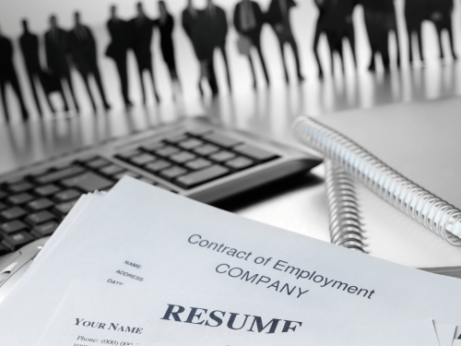Zostať zamestnancom vo firme, ktorá vás nepodporuje, alebo začať svoj vlastný biznis?
Založiť svoj malý obchod ponúka odmeny a výzvy, ktoré priťahujú tisíce nových podnikateľov každý rok. Vlastniť podnikanie je pre mnoho podnikateľov jeden veľký sen, ktorý vám umožní byť svojím vlastným šéfom, zarábať peniaze pre seba, pracovať iba flexibilné hodiny, pracovať doma, alebo pracovať na niečom, čo vás bude tešiť. Avšak s odmenou prídu aj výzvy a viac ako 50 percentám všetkých nových firiem sa nepodarí úspešne realizovať v prvých piatich rokoch existencie.
Väčšina podnikateľov súhlasí s tým, že hlavnými dôvodmi pre vysokú mieru neúspechu je nedostatok skúseností, obchodné a finančné plánovanie a manažérske zručnosti. Tí, ktorí tvoria nový podnik, musia začať tým, že rozvíjajú zdravé obchodné a marketingové plány, aby ich sprevádzali počas počiatočných startup rokov. Musia mať silné manažérske zručnosti a musia byť schopní presvedčiť potenciálnych veriteľov k financovaniu svojho podniku. Tento článok objasní, akou cestou sa môžete vybrať. Vysvetlí základné rozdiely medzi zamestnancom a podnikateľom, ich výhody a nevýhody hlavne po finančnej stránke.
V živote, keď sa vám menej darí, tak si veľakrát kladiete otázky, ako napríklad: Zostať zamestnancom firmy, ktorá vás nepodporuje alebo začať podnikať? Čo je pre vás to pravé? Ak si tieto otázky dávate veľmi často, tak ste na správnom mieste a tento článok bude niečo pre vás. V tomto článku bude popísané, čo to znamená prechod na svoje vlastné podnikanie a aké faktory s tým idú ruka v ruke. Je to určite sen každého vlastniť raz svoje vlastné podnikanie, ale prichádza s tým aj veľká zodpovednosť. Pochopíte, čo môžete urobiť, aby ste sa stali úspešným vlastníkom firmy. Nájdenie konzistentne dobre platenej práce bude stále ťažšie a ťažšie. Pri dobrom prieskume zistíte, že na trhu je k dispozícii obrovské množstvo nových a skvelých podnikateľských príležitostí.. Tieto príležitosti sa uskutočnia len vtedy, ak spustíte dobre zaobalený podnikateľský plán. Hoci vlastniť a prevádzkovať podnikanie je veľkou záťažou, môže sa to stať veľmi ziskovou činnosťou.
Ak začnete podnikať v oblasti, ktorá vás baví, nemusíte pracovať pre niekoho po zvyšok svojho života. Čiže chcete sa dostať do štádia, keď sa vaša práca stane aj vaším koníčkom.
Nepáči sa mi moja práca. Nadriadený je neznesiteľný. Neznášam, keď mi niekto stále nariaďuje a inštruuje ma, ukazuje mi, kedy a ako na to. Veľakrát súperíte s týmito myšlienkami. Vlastník spoločnosti je vždy sám sebe pánom a robí si, čo chce. Vyberie si voľný čas, kedy chce. Nemusí si žiadať od nikoho povolenie. Len zadáva objednávky a počíta rastúce peniaze na účte.
Musíte sa dostať do štádia, kde si už myslíte, že toto sú presvedčivé, postačujúce dôvody, alebo ten správny čas začať svoj vlastný biznis. V druhom rade samozrejme viete, čo je zodpovednosť za svoje vlastné podnikanie, do ktorého sa chcete zapojiť. Od prechádzky ružovou záhradou je to predsa len ďaleko.
Nebudeme v tomto článku rozoberať obchodné podmienky alebo návrhy. Budú vám ponúknuté len nejaké vnútorné myšlienky na nastavenie vašej osoby, ktoré signalizujú, že je čas ísť alebo sa posunúť ďalej.
Nejde tu len o to, že prechod z pozície zamestnanca na podnikateľa je ten jediný správny krok. Poznám veľa úspešných zamestnancov aj bývalých kolegov. Darí sa im, majú slušný príjem. Na vašom alebo mojom postoji sa nič nemení. A je to tak v pohode. Všetci sme unikátni a spokojnosť i šťastie nám prinesie množstvo ďalších vecí. Ide tu o krásu a rozmanitosť nášho života.
Takže chcem hovoriť o 5 ukazovateľoch, ktoré môžu byť určitým znamením pre vás, že už je čas sa posunúť vo vašom živote niekam iným smerom. Možno aj niečo dôležité v živote zmeniť. Či už ide o zmenu zamestnania alebo začatie vlastného biznisu.
1. Ste v pozícii, že stále chrlíte nové a nové nápady
Stalo sa vám to, že váš mozog pracuje stále naplno a neustále prichádzate s novými nápadmi? Ste zaplavení radami a predstavami o tom, ako by organizácia mohla lepšie a efektívnejšie pracovať? Ako by ste mohli zarobiť viac peňazí a ako by sa mohli produkty spoločnosti zlepšiť a zvýšiť profit? Možno prišiel čas na aplikovanie všetkých vašich nápadov a ich rozvíjanie vo svojom vlastnom podnikaní.
Ako tieto veci používať: V prvom rade si píšte alebo nahrávajte svoje nápady. Nemusíte neustále nosiť pero a papier, môžete si svoje nápady nahrávať na diktafón alebo mobilný telefón. Nikdy neviete, kedy by sa vo vašej hlave mohol objaviť tzv. Miliónový nápad.
V druhom rade sa potom pozrite na svoje nápady a dôkladne o tom popremýšľajte, ako by ste ich mohli realizovať vo vašom voľnom čase. Ak nechcete ísť len svojou cestou, môžete tiež podporiť spoločnosť, v ktorej pracujete, v implementácii vašich nápadov. Ale ak ste už rozhodnutí o zmene a hovoríte, že to je fakticky len môj vlastný nápad, potom teda získajte odvahu, obetujte všetko pre svoj nápad a oddajte sa s celým svojím potenciálom tomu, čo idete urobiť. To neznamená, že budete musieť opustiť svoju prácu.
Vo svete je mnoho úspešných ľudí, ktorí majú svoje vlastné zamestnanie, ale popritom si vybudovali pomaličky svoj vlastný úspešný biznis. Hlavne si najskôr vybudujte pevné korene pre svoju firmu. Bude to skvelý krok, dodajte si odvahu a pomaličky pokračujte pevnými krokmi ďalej. Pre porovnanie na Obr 1. sú uvedené výhody a nevýhody zamestnanca a samostatne zárobkovo činnej osoby.
Výhody a nevýhody jednotlivých právnych foriem
Zamestnanec
| VýhodyŽiadne náklady na účtovníctvo ani daňové priznaniaOchrana Zákonníkom prácePráva vyplývajúce zo Zákonníka práceŽiadne vstupné nákladyŽiadne riziká daňovej kontroly | NevýhodyNajvyššie daňovo-odvodové zaťaženie Nízka právna flexibilita |
ZČO
| VýhodyNižšia daňovo-odvodové zaťaženieMožnosť zahrnúť do určitej výšky napríklad náklady na automobil a zvýšiť si tak daňové výdavky (často zneužívané protizákonne)Možnosť vyplácania cestovných náhrad (často zneužívané protizákonne)Prípadná možnosť odpočítania DPH na vstupePrvý rok neplatí obligatórne sociálne odvodyPrávna flexibilita | NevýhodyRučenie celým majetkomRiziko administratívnych sankcií vyplývajúcich z daňových kontrol predovšetkým za nesprávne zahrnutie daňových výdavkov (zahrnutie nákladov na automobil, pričom sa používa aj na súkromné účely)Vedenie jednoduchého účtovníctvaVstupné nákladyNie je chránený Zákonníkom práce |
Obr. 1. Zdroj https://www.pravnenoviny.sk/analyzy/zamestnavanie-na-sro-alebo-zivnost-pohlad-nielen-z-hladiska-dani-a-odvodov
2. Preskúmajte, či už ste dosiahli svoj kariérny vrchol vo svojom zamestnaní
Ak ste sa vo svojom zamestnaní dostali do bodu, že už sa nebudete môcť posunúť vo svojej kariére z vašej aktuálnej pozície na pozíciu lepšiu, a to nielen v spoločnosti, kde pracujete teraz, ale ani v konkurenčnom prostredí, je to určite ďalšie znamenie, že by ste sa mohli pokúsiť začať svoj vlastný biznis.
Lokalizujte dieru na trhu, alebo ako by ste mohli zužitkovať svoje odborné znalosti, skúsenosti a zručnosti, ktoré ste nadobudli počas rokov, keď ste boli zamestnancom. Tentokrát ale pod svojou vlastnou predajnou značkou. Zamerajte sa na to, čo ste získali z praxe. Nájdite svoje silné stránky, zistite v čom ste výnimoční. Zamerajte svoj biznis na svoj talent alebo na svoju odbornosť.
Trh je veľmi pestrý. Veľa vecí už na trhu existuje, ale to neznamená, že to nemôže byť vykonané lepším, kvalitnejším spôsobom. Zmeňte uhol pohľadu. Ak prídete s pôvodnou jedinečnou myšlienkou, s inovatívnym prístupom, každý nápad bude mať veľký potenciál uspieť. Je potrebné sa úplne oddať myšlienke a naplánovať vhodnú dravú stratégiu na dosiahnutie vytúženého cieľa.
Ani by ste neverili, aké rôznorodé, ale hlavne absurdné produkty alebo služby vo svete existujú a stále sú zaujímavé: Napríklad www.Dedoles.sk ponúka ponožky, ktoré nemajú pár, každá má iný vzor, rovnaká je iba základná farba. O to sú ale príťažlivejšie, lebo nie sú ako štandard – proste sú iné.
Zamyslite sa, je váš nápad dosť bláznivý na začatie vlastného biznisu? Jednoznačne povedané, ak vyriešite svojou ideou niekoho problém, alebo dokážete ľudí ohúriť, pobaviť a pritom zarobiť, máte určite šancu, aby váš biznis bol úspešne fungujúci.
3. Zamyslite sa nad vašimi skúsenosťami a zručnosťami – sú kapacitne naplno využité?
Každý zamestnávateľ je nadšený, ak má pracovníka, ktorý je prínosom pre spoločnosť, pomáha plniť firemné sny a vízie. Vy ale máte ten pocit, že stále máte čoraz viac vlastnej energie, ktorú ale neviete využiť v práci. Toto bude samozrejme ďalší signál, že už ste pripravení na svoju vlastnú firmu. Objavujete v sebe obrovskú chuť ísť, pokračovať vo svojej vízii posunúť sa ďalej. Dokonca môžete cítiť aj adrenalín z neznámeho teritória, kam vás táto myšlienka priťahuje.
Ak ste sa teda dostali do štádia, kde už vážne uvažujete o vlastnom biznise, začnite ihneď, a to v prvom rade s vaším podnikateľským plánom. Zistite, aký produkt alebo službu by ste relatívne mohli priniesť na trh. Urobte si marketingový prieskum, anketu medzi ľuďmi, preverte si, či váš produkt alebo služba má kladnú spätnú väzbu, a hlavne si overte váš skutočný potenciál.
Je samozrejmé, že riziko tu vždy existuje, ale môžete ho minimalizovať. V ďalšom kroku sa spojte s osobou, ktorá už takýmto niečím prešla, aby vám popísala, akým ťažkostiam sa treba vyvarovať. Vezmite si to ako inšpiráciu pre seba. Hlavne musíte o všetkých problémoch, ktorých sa obávate, vopred diskutovať, poučiť sa od najlepších, aby ste prešli ľahšie k tomu, čo chcete urobiť. Musíte sa vyhnúť rovnakým chybám, ako urobili oni pred tým, ako sa stali úspešnými. Musíte si konštantne klásť otázky, či je všetko tak, ako má byť.
4. Snažte sa o to, aby ste sa správali naturálne a nehrali sa na to, čo nie ste
Určite vo svojej podstate je to veľký rozdiel, myslieť si, že ste dobrý odborník, verzus naozaj ním byť. Vo svojej práci prichádzate ku kolegom, aby ste si overili svoj pracovný postup alebo proces, aby ste sa uistili, či to naozaj robíte správne. To je znakom toho, že tento pojem rozpoznávate, teda ste prirodzenou autoritou vo svojej podstate. Tento predpoklad je nielen skvelý pre vedúcu pozíciu, ale hlavne aj dôležitý pre úspešné podnikanie.
Okruh vašich najbližších kolegov už určite zistil, že ste veľmi ochotní, ale hlavne užitoční pri spracovávaní zadávaných úloh. Naturálny podnikateľ musí byť empatický, ale aj samozrejme asertívny, tvorivý a hlavne schopný prísť s novým nápadom a myšlienkami.
5. Musíte byť zapálení a mať neustálu chuť do práce, keď budete pracovať na seba
Vlastný biznis je veľmi veľká výhoda, že môžete vôbec pracovať pre seba. Samozrejme vlastný biznis je veľmi atraktívny. Teoreticky ste svojím vlastným pánom, teda môžete si robiť, čo chcete. Nemusíte si brať dovolenku, keď potrebujete ísť niečo vybaviť. Nikto vás vlastne nekontroluje, kedy prídete do práce. Vy rozhodnete, aký bude váš plat alebo aké budú vaše odmeny. Sám rozhodnete, koho budete zamestnávať vo vašom biznise. Nemôžete sa len nečinne prizerať!
Ak začnete svoj vlastný biznis, budete sa musieť naučiť obrovské množstvo vecí, o ktorých ani neviete a ani ste nevedeli, že vlastne existujú. A samozrejme nebudete ani môcť povedať, že to nepatrí do vašej náplne práce, toto nie je v mojej kompetencii. Vždy musíte mať všetko pod kontrolou a vždy musíte mať prehľad o tom, čo sa deje. Musíte sa ďalej rozvíjať a vzdelávať, vždy musíte mať návrh. Samozrejme nielen z hľadiska vašej odbornosti, ale aj v nových oblastiach, ktoré ešte budete v biznise potrebovať. Naučte sa napríklad, ako budete v budúcnosti riadiť a viesť svoj vlastný nový tím. Treba zvýrazniť a identifikovať kompetencie, musíte vedieť ako motivovať svojich zamestnancov.
Úplná zodpovednosť za celú činnosť vo vašom biznise, ale aj zodpovednosť za vašich zamestnancov, bude len a len na vašich pleciach. Flexibilný pracovný čas je fantastická vec. Ale pevne verím, že v prvých dňoch vášho vlastného podnikania určite prídete do firmy prvý a samozrejme ako posledný budete odchádzať zasa len vy. Tak toto je bohužiaľ krutá realita a jednoducho budete musieť priniesť obeť, aby to všetko fungovalo, ako má.
6. Pozitívne a negatívne stránky podnikania
Pozitíva:
- Konkrétne smerovanie vášho podnikania je len a len pod vašou priamou kontrolou
- S určitosťou si môžete vytvoriť pracovné prostredie podľa vašich predstáv
- Keď sa váš biznis ustáli – nastáva obdobie s nižším stresom
- Budete flexibilní a budete si riadiť svoj osobný čas
- Budete si stanovovať méty pre svoj úspech
- Rozhodnutie, čo mienite dosiahnuť, bude len na vás
- Je tu možná spolupráca s inými na úlohách, kde nepostačujú vaše schopnosti
- Budete získavať vedomosti a skúsenosti, ktoré budú pre vás užitočné pre ďalší vývoj v podnikaní
- Do svojho podnikania a práce vkladáte vlastné nadšenie, elán a vlastné myšlienky
- Máte viac slobody a môžete nezáväzne tvoriť
- Slušný finančný zisk
Negatíva:
- Keď sa vyskytne nejaký problém, musíte ho riešiť len a len vy
- Úspech si vyžaduje čas a veľa trpezlivosti
- Váš príjem bude raz hore, raz dole, teda zo začiatku veľmi premenlivý
- Budete musieť obetovať veľa času, aby ste boli schopní vyriešiť množstvo problémov
- Budete s určitosťou pod vysokým tlakom, aby ste uspokojili širokú škálu zákazníkov
- Budete musieť investovať svoje alebo požičané peniaze, a to nesie so sebou určité riziko
- Žiadne nadčasy nebudete mať zaplatené, ako predtým vo firme
- Musíte byť veľmi flexibilní k novým zmenám
- Vysoký stres môže ovplyvniť vaše priateľské a rodinné vzťahy
- Idete s určitosťou do neznámeho teritória a neexistuje žiadna garancia, že váš biznis bude úspešný
- Ak začnete byť frustrovaní, budete sa cítiť izolovaní
- Niekedy sa budete pohrávať s myšlienkou, že to už vzdáte
- Nebudete mať žiadne zamestnanecké výhody ani plat, keď budete chorí
- Veľa vonkajších faktorov môže výrazne ovplyvniť váš úspech (zákazník s finančnými ťažkosťami)
A nakoniec rada do budúcna
Vaša cesta k vlastnému biznisu by mala byť naturálnym a hlavne logickým cieľom vašej kľukatej životnej cesty. Nechajte tomu prirodzený, hladký priebeh, nestresujte sa. Musíte hlavne veľa relaxovať. Lebo iba v pohodovej atmosfére môžete získať náhle a kvalitné inšpirácie. Samozrejme tieto myšlienky budú len v začiatkoch, pamätajte na to, že potom v podnikaní vás čaká veľa náročnej práce.
Musíte sa zamyslieť úprimne a musíte si jednoznačne odpovedať na otázky: Ste vystrašení z predstavy, že ak začnete podnikať, kráčate s určitosťou do neistoty? Máte strach z toho, že sa budete musieť naučiť veľké množstvo nových vecí? Máte strach z toho, že budete zodpovední za všetko, čo sa vyskytne vo vašom biznise?
Ak si myslíte, že máte dostatočné množstvo odborných zručností a disponujete aj novátorskými myšlienkami, treba si určite položiť zásadnú otázku, či ste na svoje vlastné podnikanie pripravení aj po mentálnej stránke. Množstvo skvelých podnikateľov sa s určitosťou vyznačuje takticko-psychologickými rysmi a pozitívnym emocionálnym zdravím, ktoré im pomáhajú smerovať až k vrcholu úspešnosti. Ak ste ochotní čeliť prichádzajúcim ťažkým situáciám, môže to s určitosťou znamenať, že ste vysoko mentálne pripravení na vstup do veľmi atraktívneho sveta biznisu, a to je vlastne odpoveď na výskumnú otázku, že táto cesta bude pre vás tým najlepším riešením.
Ak ale nie ste spokojní alebo sa vám nepáči, že spočiatku budete musieť obetovať veľké množstvo hodín svojmu biznisu, alebo nechcete dodržiavať disciplínu, tak určite ešte nie je ten správny čas, aby ste začali s podnikaním. Doporučujem, choďte do podnikania iba vtedy, ak si odpoviete na otázky s úprimnosťou a to takto: Áno, samozrejme som pripravený ísť teraz do svojho vlastného biznisu a som ochotný sa popasovať s problémami, ktoré prídu. Budem im čeliť a s rozvážnosťou ich riešiť.
Autor: Ing. Zdenko Kyselica, MBA, student LIGS University, pod vedením Dr. Zdeno Matty.



